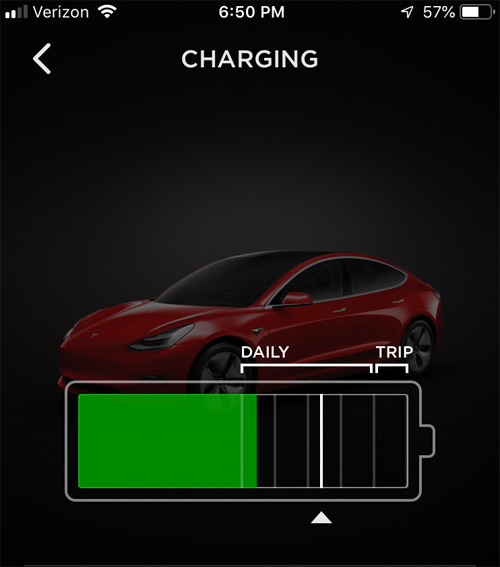
|
|---|
|
Beginners Guide to Electric Vehicles Introduction Electric Vehicle Types Choosing an Electric Vehicle Charging Technology Charging Your EV Home Charging Solar and Ways to Reduce Your Bill Contact the Author |
Charging Your Electric Vehicle
The most common questions I receive from non-EV owners are concerning charging. Generally, how far can the car go on a charge and how long will it take to recharge. My standard answer for my Tesla Model 3 long range model is 310 miles, and about 40 minutes to recharge. I follow this by a disclaimer, this is not for everyday driving. Range and charging time are complicated concepts with electric cars. Lithium based batteries are not like a gasoline fuel tank where you run the car down to empty and then fill it to the top. If you charge an electric car to 100% power and then drop it to 0% you are going to permanently damage the battery. Auto manufacturers have programmed in a buffer at both ends of the charge spectrum to prevent the battery from being fully charged and discharged. However, this is still not enough to ensure longevity of your battery. Tesla has taken charge management a step further by allowing the driver to set the maximum charge ceiling. Tesla recommends for daily driving not to exceed 90% charge capacity. If taking a long trip it is recommended that you top off the final 10% of the battery just before departure. Do not let the car sit overnight with 100% state of charge. If you run down the car to near empty you do not want to let the car sit in the low state of charge for very long. If you arrive your brother’s house with less than 10% charge, plug the car in, even if it means using a standard 110 volt outlet. Although our Tesla Model 3 has a rated range of 310 miles, for everyday driving we typically charge the car to 80% capacity, or about 250 miles. When we plan to make a road trip we charge the car to 90% the night before. Then, if we need extra range, we plug it in a half hour before departure to bring it to full. Likewise, we try not to let the Model 3 fall below 10% charge capacity. Other manufacturers handle the charging capacity differently. Some will build in a large safety buffer and will not give the driver control over the feature. The downside of this approach is the manufacturer needs to install a much larger battery in the car to meet the range goals.  Tesla offers the ability for the owner to select the charger percentage. Each line on the screen indicates 10% of capacity. The Chevrolet Bolt appears to almost ignore the charging issue by possibly allowing the battery to nearly deeply discharge and fully charge. The Bolt’s battery warranty spells out that 40% of range may be lost over the life of the battery warranty. This is a rather frightening fine print that indicates that after 100,000 miles your 238-mile range Bolt may only travel 143 miles. Bolts do not have the ability to set a charging ceiling like a Tesla vehicle, but it does have a limiting feature known as the Hilltop Reserve feature. Lets say you live on top of a tall mountain, and every day you travel down this mountain to work. This feature allows you to charge the car to 90% with the assumption you would generate the final 10% using regenerative braking on your downhill descent. You could use this daily, even if you don’t live on top of a mountain to ensure you are not damaging your battery by overcharging. At any rate the poor battery warranty on the Bolt would cause me concern even with taking care of your battery. CCS, CHAdeMO, and Supercharging There seems to be misconception among non-EV owners that DC fast charging, including Supercharging is a substitute for standard rate charging. Some think they can just take their car to the fast charger once or twice a week, like taking an internal combustion powered car to the gas station. Frequent fast charging of your battery will permanently degrade it. If you are a regular long distance traveler where you are using Supercharging a few times a week, then you probably should consider a gasoline power car. Some Tesla owners who overused Supercharging found the company slowed down subsequent charging sessions. In those instances their batteries had been permanently degraded by frequent Supercharging. NEXT SECTION: Home Charging |
|